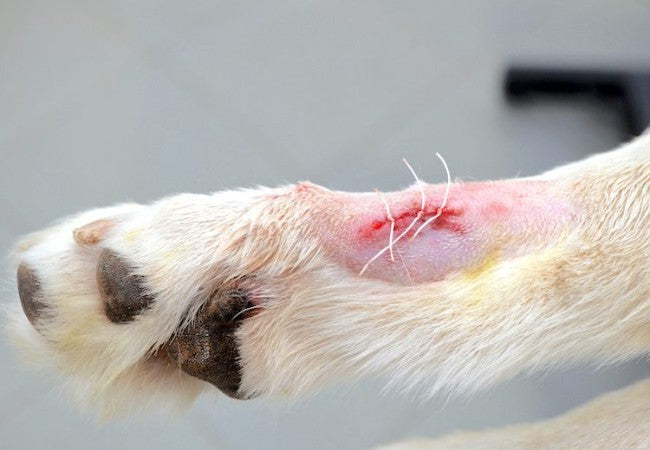Dog Dewclaws 2025 Guide: Vet Approved Insights on Purpose, Care & Removal 🐾

In this article
Dog Dewclaws 2025 Guide: Vet Approved Insights on Purpose, Care & Removal 🐾
By Dr. Duncan Houston BVSc
Hello—I'm Dr Duncan Houston BVSc, veterinarian and Ask A Vet founder. Dewclaws are often misunderstood as vestigial, but front dewclaws have real function. In this vet‑approved guide, you’ll learn about:
- Anatomy and natural function of dewclaws
- How to keep them trimmed and healthy
- When removal is necessary—and when it’s not
- Risks vs. benefits of keeping dewclaws
- Ask A Vet tools to monitor dewclaw care
1. Anatomy & Purpose
Front dewclaws are true digits, with two bones and multiple tendons attached—playing a role during high-speed turns by digging into the ground to prevent torque and stabilize joints.
- They help grip objects—like bones or toys—and assist dogs climbing or in water.
- Although rare on hind legs, rear dewclaws are often attached only by skin and less functional.
2. Why Keep Dewclaws?
- Joint protection: Removing front dewclaws increases risk of carpal and limb injury due to twisting forces—linked to arthritis in athletes.
- Low injury incidence: Studies show dewclaws rarely get injured, and removal raises injury risk on other digits.
3. Dewclaw Care is Key
- Trim dewclaws every 4–6 weeks—they don’t wear down naturally like other nails.
- Untrimmed dewclaws can overgrow, become ingrown, infected, or tear—prompt vet care is needed.
- Inspect regularly for swelling, discharge, foul smell, or pain.
- Learn safe trimming using proper tools and watching for the quick.
4. Removing Dewclaws: When & How?
- Loosely attached dewclaws (usually rear or double) may be removed under anesthesia, especially if prone to injury.
- Front dewclaws should stay unless diseased, injured, or severely traumatized.
- Puppies may have dewclaws removed at 3–5 days old—easier and less invasive—but must be done by a vet.
5. Risks of Removal
- Surgical removal can weaken wrist stabilization by severing tendons and muscles.
- Long‑term increased chances of arthritis or limb injury especially in active dogs.
- Risks include stump regrowth, infection, and surgical complications.
6. Ask A Vet Tools for Dewclaw Care
- Set reminders for dewclaw trims every 4–6 weeks
- Log paw exams, infections, injuries, or trimming issues
- Get alerts if infection signs appear (swelling, redness, discharge)
- Track recovery after dewclaw surgery or injury
- Store vet contact info and care documentation for easy access
📌 Final Thoughts from a Vet
Front dewclaws serve real mechanical and athletic purposes; removal isn’t routine and should be done only for medical reasons. Proper trimming and inspection keep dewclaws healthy and functional. Ask A Vet provides tools to ensure diligent care, timely alerts, and peace of mind for caretakers. 🐾❤️






